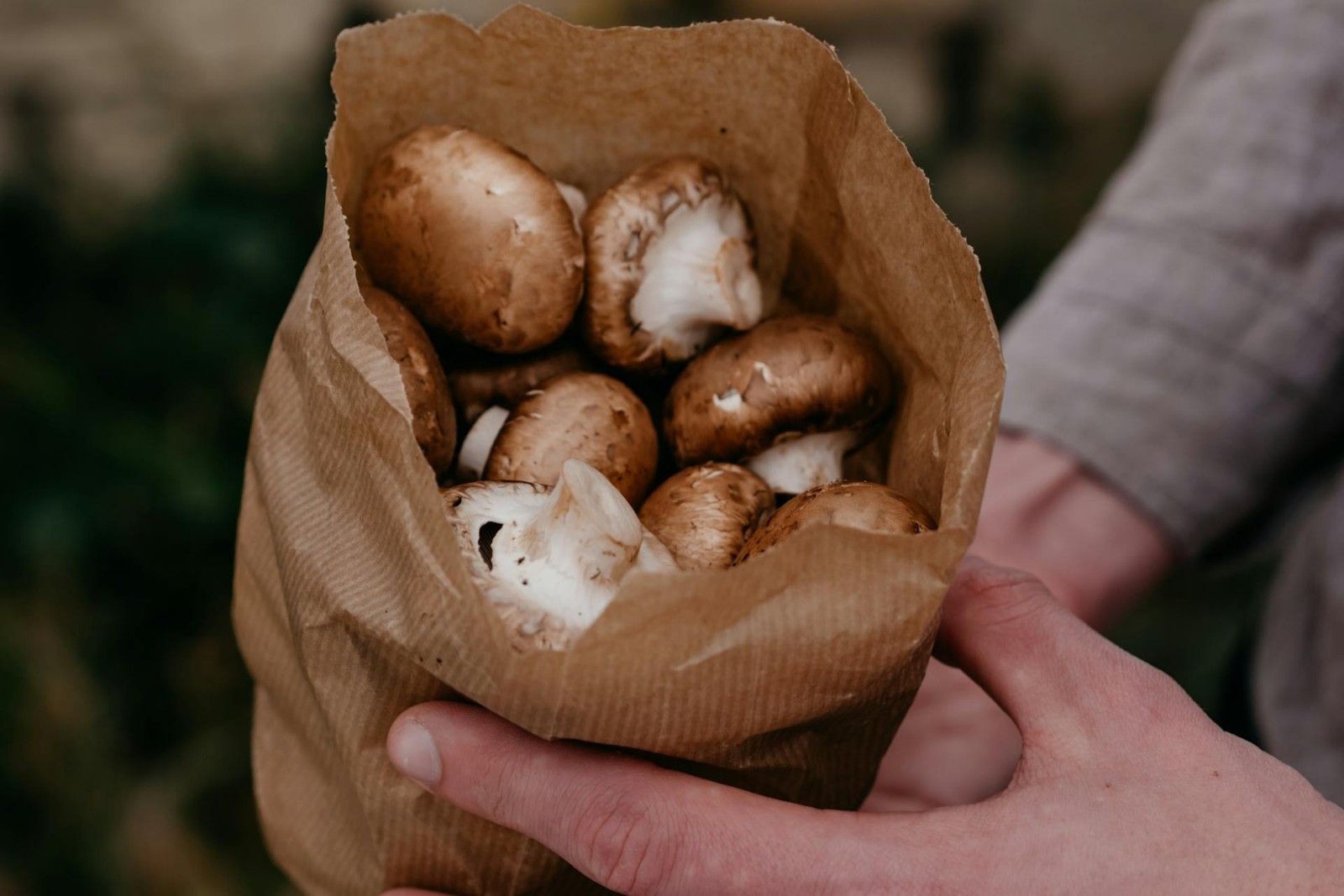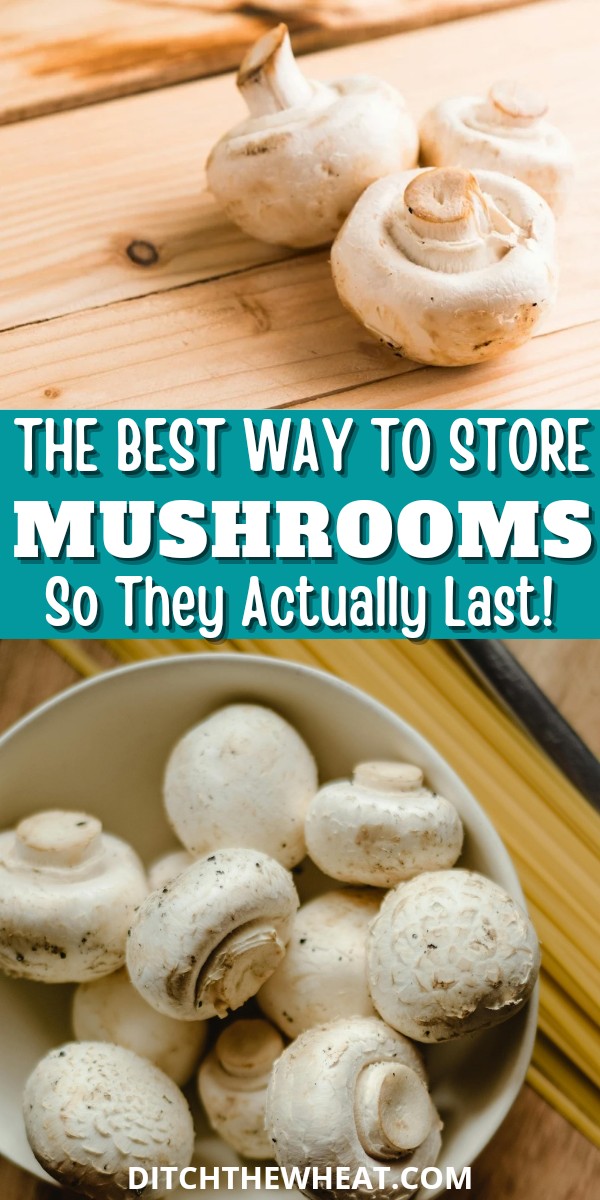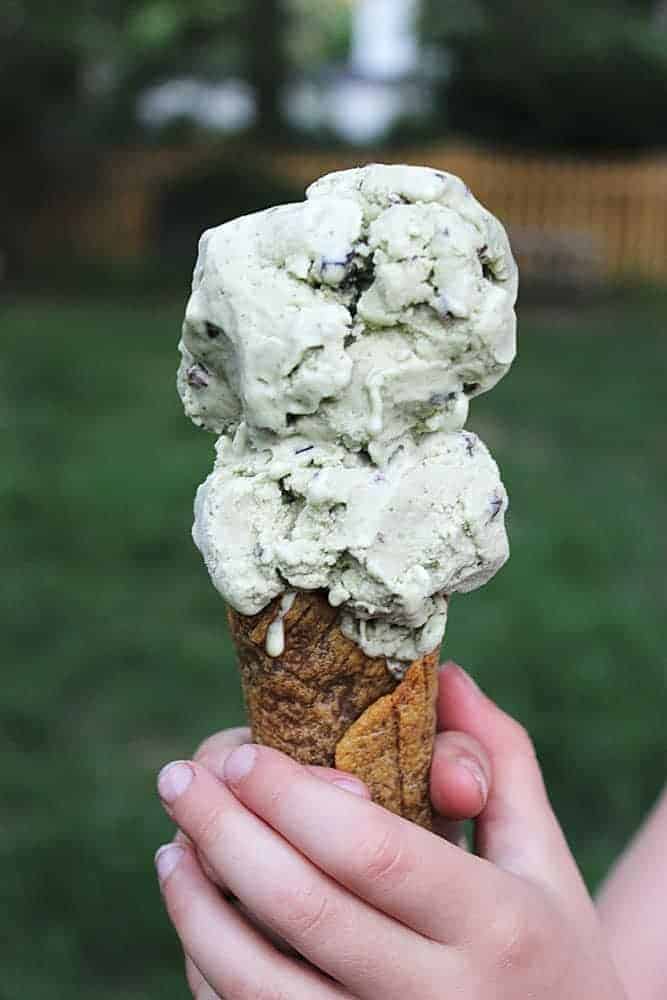The Best Way To Store Mushrooms So They Actually Last!
This post contains affiliate links including Amazon affiliate links.
Mushrooms pack a punch with their umami kick and meaty texture, but the real challenge lies in keeping them fresh. Mushrooms are notoriously quick to spoil unless you know the proper storage tips to keep them fresh. I’m spilling the secrets on how to store mushrooms perfectly, from fridge tips to freezing hacks.

Choosing Mushrooms
Keeping mushrooms fresh for as long as possible starts with how you buy them from the grocery store or farmer’s market. Opt for those that feel firm, look dry, and smell earthy — signs they’re at their peak.
Stores that keep mushrooms open to the air in baskets are best. However, if your only option is a plastic-wrapped container in the refrigerated produce section, look for accumulated water inside the package.
Despite being composed of 90% water, mushrooms don’t take well to water. In excess, water will spread bacteria and create that slimy film we all dread before even having a chance to cook them.
Different Methods for How to Store Mushrooms
Before we jump into the variety of storage options that work best for storing mushrooms, it’s important to note that all these methods assume you’re storing whole mushrooms.
While it may be tempting to prep and clean mushrooms when you get home from the store, they’ll last longer when kept whole. That’s why it’s not uncommon to see sliced mushrooms in packages already turning slimy in the store.
Option 1: Storing Mushrooms in their Original Container
For most of us, this is probably the most popular mushroom storage method out there — buy the container of mushrooms and throw it in the fridge when you get home from the store until you’re ready to toss them in a soup or serve them alongside a ribeye steak. Despite its simplicity, this method works fine if you only store the mushrooms for a short time.
If you’re not planning to use the mushrooms within three days, keep reading. Otherwise, there’s nothing wrong with this approach. Of course, it depends on how fresh the mushrooms look, to begin with, but two to three days are usually short enough to avoid any water accumulation underneath the plastic wrap, which will eventually spoil the mushrooms.

Option 2: Bowl with Paper Towels
This method works well for medium-duration storage of about four to five days. To do this, line a large bowl with paper towels. The size of the bowl is important so the mushrooms have plenty of room to breathe and not be packed tight against each other. Cover the top of the bowl with more paper towels.
The paper towels help absorb any moisture coming off the mushrooms and condensation from the refrigerator. This method is nice because, unlike the previous approach, where adjusting the plastic to check on the mushrooms would break the seal, you can easily remove the top paper towels to gauge their freshness throughout the week and meal plan accordingly.

Option 3: Paper Bag
Considering this is how any vendor at a farmer’s market will hand you your freshly purchased mushrooms, I would’ve expected this to be the best way to store mushrooms. While it’s not too shabby, it’s not the front-runner either.
This approach is good for a medium to long-term storage duration and should keep most of the sliminess away for five to seven days; there may be a few discolored spots on the mushrooms towards the end of that timeframe.
The consensus, however, is that discoloration isn’t necessarily problematic when eating mushrooms. In fact, Cook’s Illustrated says those spots on white button mushrooms may even lead to a more robust, earthier flavor than unblemished mushrooms. Use them in a stroganoff for an even more comforting flavor if that’s the case.
Option 4: Paper bag with paper towels
The winning mushroom storage option combines the best of both worlds — a paper bag with paper towels. Its double protection against moisture will keep mushrooms the freshest for the longest period. You can safely expect mushrooms stored in this manner to last seven to eight days, but up to 10 days isn’t out of the question.
Line a brown paper bag with folded paper towels and dump in the mushrooms. The paper bag and the paper towels work overtime to soak up the moisture created in the refrigerator.
While these four storage options are the most common, you can certainly play around with other methods and experiment with what works best for you. Zuzana Paar from Best Clean Eating cleans all the mushrooms after foraging and leaves them to dry in a shaded area.
Once they’re dry and ready for storage, she then places the mushrooms in a glass container or a plastic bag with a few bay leaves inside and claims they stay fresh for a month that way.

The Biggest Takeaways
With mushroom consumption on the rise as a new wellness trend, knowing how to store them is more important than ever. Plastic is a mushroom’s worst enemy. It traps moisture and causes dampness, which results in the mushrooms becoming slimy, discolored, and even moldy.
To play it safe, use all mushrooms within three to five days of purchasing. However, if you absolutely must store them longer, take the extra effort and store them in a brown paper bag with paper towels to get the longest shelf life out of them.
This article originally appeared on Food Drink Life.
More Food Storage Tips
- How to Freeze Avocados So You Can Use Them For Anything
- How to Store Strawberries
- How to Properly Store Potatoes So They Last 10 Months
- How to Store Almond Butter So it Doesn’t Go Bad
- How to Store Almond Flour
DISCLOSURE: Not intended for the treatment or prevention of disease, nor as a substitute for medical treatment, nor as an alternative to medical advice. Use of recommendations is at the choice and risk of the reader. Ditch the Wheat is a participant in the Amazon Services LLC Associates Program. As an Amazon Associate I earn from qualifying purchases. I may receive monetary compensation or other types of remuneration for my endorsement, recommendation, testimonial and/or link to any products or services from this blog. I only endorse products that I believe in.

Gina Matsoukas
Gina Matsoukas is the writer, photographer and recipe creator of Running to the Kitchen. Focusing on healthy, seasonal, whole-food recipes, her work has been featured in various online and print publications including Food Network, Prevention Magazine, and Women’s Health. Gina lives in central New York, where she enjoys an active outdoor life.
Gluten Free Resources
Do you need help with gluten free meals?
I recommend this meal-planning app. It makes cooking gluten free dinners extremely easy and family-friendly.
What gluten free snacks can I eat?
Lots! I have a ton of practical gluten free snack recipes in my cookbook.
How can I eat dessert on a gluten free diet?
You can 100% eat dessert while eating gluten free. Try my dessert cookbook for easy gluten free dessert recipes.
How do I know what is gluten free and what isn’t?
I have a whole section is it gluten free?
How do I make substitutions?
If you need substitution advice I created a ton of resources here.








